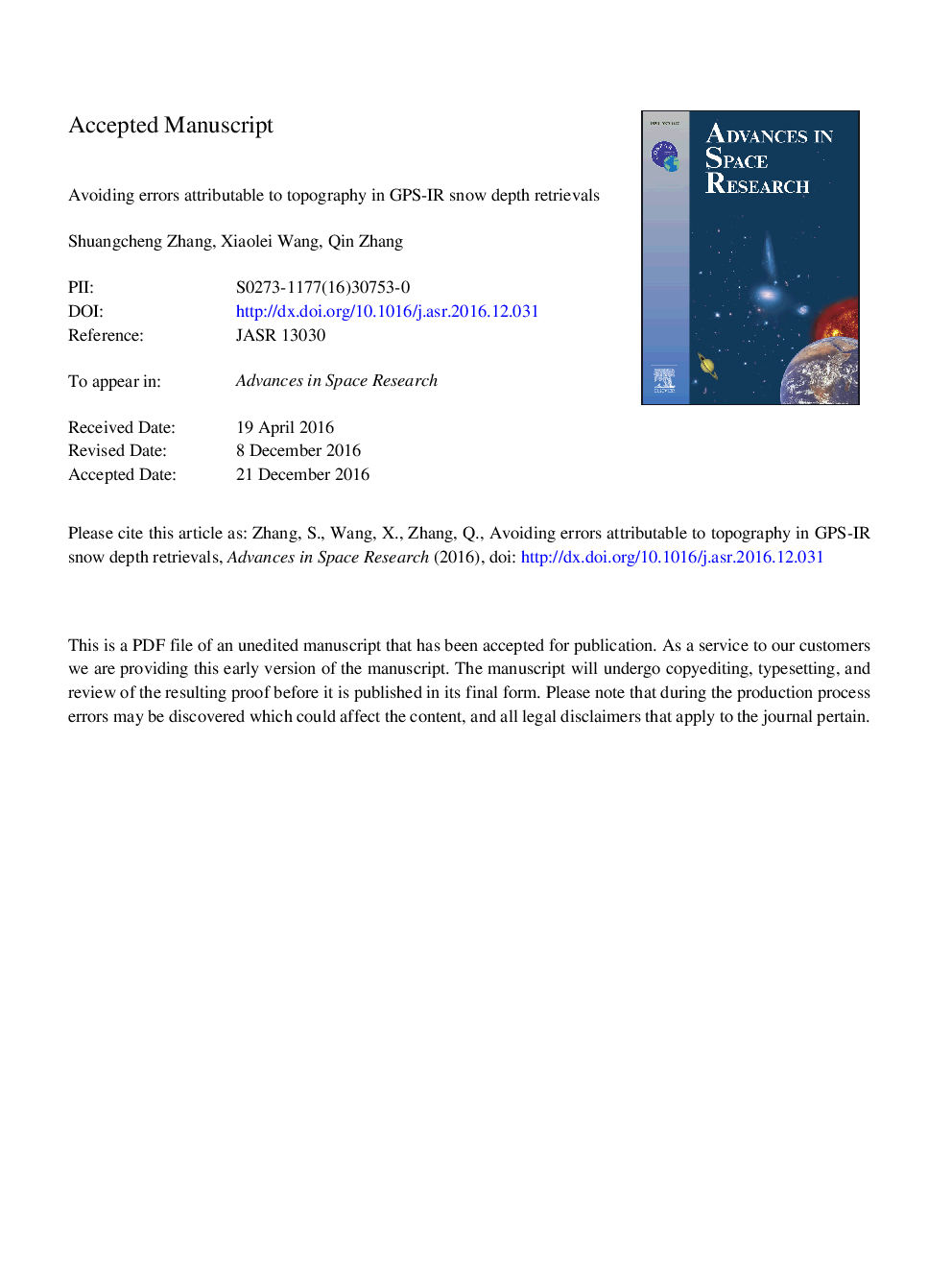| Article ID | Journal | Published Year | Pages | File Type |
|---|---|---|---|---|
| 5486245 | Advances in Space Research | 2017 | 13 Pages |
Abstract
Global Positioning System (GPS) interferometric reflectometry represents a potential source of new snow data for climate scientists and water managers with spatial and temporal sensitivity. Generally, the snow layer fluctuation is considered to be correlated with the ground surface fluctuation. The reflector heights in terms of the signal-to-noise ratio (SNR) are quite close to the vertical distance between the antenna and the ground or snow level at the corresponding Fresnel zone. The reflector heights at different zones were represented by a grid model in this work, which can reflect and overcome some of the problems caused by the topography. The proposed method for snow depth retrievals looks for good quality reflector height values of the horizontal reflecting zone in the grid model, and with this method improvements in snow depth retrieval accuracy were achieved (RMSE: 7.40Â cm, Corr.: 0.99) compared to the PBO H2O group calculation results (RMSE: 16.58Â cm, Corr.: 0.99).
Keywords
Related Topics
Physical Sciences and Engineering
Earth and Planetary Sciences
Space and Planetary Science
Authors
Shuangcheng Zhang, Xiaolei Wang, Qin Zhang,
